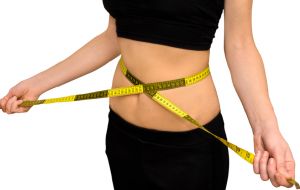
Related Topics
Risk Factors for Osteoporosis
People with osteoporosis have brittle bones, which increases the risk of bone fracture, particularly in the hip, spine, and wrist. Although the risk of becoming osteoporotic is tied to genetics as well as many dietary and lifestyle issues, the true cause of this condition remains somewhat unclear. One key to osteoporosis prevention is the attainment of maximum peak bone mass during the first 30–35 years of life. This means that dietary and lifestyle habits that help prevent osteoporosis should begin as early in life as possible. During middle and old age, osteoporosis prevention focuses primarily upon slowing down the rate of bone loss.
Osteoporosis Prevention and Options
Age
People of advanced age have a higher risk of osteoporosis, resulting from cumulative years of gradual bone loss starting before middle age. They also have an increased risk of falling, due to changes in vision, strength, and balance. Together, these factors contribute to the large number of fractures experienced by older people.1 People with long life expectancy should adopt dietary and lifestyle habits that will maximize peak bone mass early in life and minimize the bone loss that occurs naturally with aging.Alcohol
Chronic alcohol abuse appears to increase bone loss and contributes to osteoporotic fractures. However, mild to moderate drinking may result in greater bone density than no alcohol intake at all,2,3,4 possibly due to increases in estrogen. Of course, alcohol consumption is associated with other health hazards, such as breast and other cancers, liver disease, alcoholism, and accidents, so its use may not be appropriate in many people, despite the potential lowering of osteoporosis risk.Body Weight
Higher body weight reduces the risk of osteoporosis and related fractures, primarily because more weight on bones causes them to increase their density to support that weight.5,6 Moreover, researchers have shown that people who successfully lose weight have greater loss of bone compared with those who do not lose weight.7 Therefore, people who lose weight need to be more vigilant about preventing osteoporosis.
Due to health consequences associated with being overweight, healthcare professionals do not recommend weight gain for most people in order to reduce the risk of osteoporosis. However, very underweight people, such as those with anorexia nervosa, not only produce less weight-bearing pressure, but also produce less bone-protecting hormones, and may have many nutritional deficiencies that contribute to an increased risk of bone loss.8,9 Weight gain in underweight people may reduce the risk of osteoporosis.
Caffeine
Caffeine has been linked to fracture of the hip in a large study following American women for six years.10 Caffeine increases urinary loss of calcium.11 In one trial, caffeine was linked with lower bone mass but only in women who consumed relatively little calcium.12 The authors of this report concluded that two to three cups of coffee per day might speed bone loss in women with calcium intakes of less than 800 mg per day. Most nutritionally oriented doctors recommend decreasing caffeine intake from caffeinated coffee, black tea, and some soft drinks as a way to improve bone mass.In a group of 980 postmenopausal women, lifetime caffeine intake equal to two cups of coffee per day associated with decreased bone density in those who did not drink at least one glass of milk daily during most of their life.13 However, in 138 postmenopausal women, long-term dietary caffeine (coffee) intake was not associated with bone density.14 Until more is known, postmenopausal women should limit caffeine consumption and consume a total of approximately 1,500 mg of calcium per day (from a combination of diet and supplements).
Calcium
Good calcium nutrition throughout life is essential for achieving peak bone mass and preventing deficiency-related bone loss.15 Many trials have investigated the effects of calcium supplements on bone mass. Although insufficient when used as the only intervention, calcium supplements have helped to prevent osteoporosis.16 Though some of the research remains controversial, the protective effect of calcium on bone mass is one of very few health claims permitted by the U.S. Food and Drug Administration.
In several studies, calcium intake has not correlated with protection—for example in men17 or in women who have just started menopause.18 Moreover, even most positive studies focusing on the effects of isolated calcium supplementation on bone mass show only minor effects. Nonetheless, a review of the research shows that calcium supplementation plus hormone replacement therapy is much more effective than hormone replacement therapy without calcium.19 Double-blind research has found that increasing calcium intakes results in greater bone mass in girls.20 An analysis of many studies investigating the effects of calcium supplementation in premenopausal women has also shown a significant positive effect.21 Studies in elderly people also confirm the value of calcium supplementation to prevent bone loss and fractures in older individuals.22,23 Most doctors, recommend calcium supplementation as a way to partially reduce the risk of osteoporosis. In order to achieve the 1,500 mg per day calcium intake deemed optimal by many researchers, 800–1,000 mg of supplemental calcium are generally added to diets that commonly contain between 500–700 mg calcium.
Other Minerals
Low intake of minerals other than calcium may play a role in bone loss.24,25,26 One study reported that a daily combination of 1,000 mg calcium, 15 mg zinc, 2.5 mg copper, and 5 mg manganese was superior to calcium alone in preventing bone loss in postmenopausal women.27 Another study found that magnesium supplementation of at least 250 mg per day for two years arrested bone loss in most postmenopausal women.28Exercise
Exercise is known to help protect against bone loss29 and osteoporotic fracture, even in older people.30,31 Most types of weight-bearing exercise done by men and postmenopausal women, including walking, dancing, running, and some weight-training activities, increase bone mass in the spine and hip and lower the risk of osteoporosis at these sites.32,33,34 While more frequent and intense exercises have the greatest effect, these activities may increase the likelihood of injury. Non-weight-bearing exercises, such as arm exercises with weights, have greater benefit for the wrist and forearm.35 For premenopausal women, exercise is also important, but can be overdone if taken to extreme. Exercise so excessive that it leads to cessation of the menstrual cycle actually contributes to osteoporosis.36,37Family History
Much of the risk of osteoporosis depends upon genetics, which seems to greatly influence how much bone a person is able to build during their lifetime and how fast they will lose it. Therefore, people who have a parent (or possibly another close relative) who has been diagnosed with osteoporosis are at greater risk for developing the condition than someone with no family history of osteoporosis.38 People with higher genetic risk should adopt dietary and lifestyle habits that will maximize peak bone mass early in life and minimize the bone loss that naturally occurs with aging.Gastrointestinal Disease
Some diseases and conditions of the gastrointestinal tract make it difficult to absorb calcium and other nutrients essential to maintaining healthy bone. Due to this malabsorption problem, conditions such Crohn’s disease39 and surgical removal of part of the stomach (gastrectomy)40,41 increase the risk of osteoporosis. People with conditions that cause malabsorption should consult a healthcare practitioner to discuss the use of supplements that will help protect them from osteoporosis.Gender
Osteoporosis is most common in postmenopausal Oriental and white women. Premenopausal women are partially protected against bone loss by the hormone estrogen. Black women often have slightly greater bone mass in early adulthood compared with other women, which helps protect against bone fractures even though postmenopausal black women lose bone mass just as other women do. In men, testosterone partially protects against bone loss even after middle age. However, significant numbers of older men also develop osteoporosis severe enough to cause fractures.42 Women, because of their higher gender-related risk, should adopt dietary and lifestyle habits, such as increasing calcium intake and engaging in weight-bearing exercise, that will maximize peak bone mass early in life and minimize the bone loss that occurs naturally with aging.Hormone Deficiency
Whenever women stop producing estrogen—due to natural menopause, intense athletic training, or anorexia nervosa—and they do not take replacement hormones, some bone loss is inevitable.43,44 Similar losses occur if men stop producing testosterone, though this is much less common.45,46 The best defense against this type of bone loss is to avoid athletic training intense enough to stop menses; seek treatment for anorexia nervosa and other conditions that reduce hormone production; and to develop above-average bone density early in life through optimum diet and lifestyle habits.Medications
Corticosteroid medication, even at low doses, increases risk of osteoporosis.47 Steroidal anti-inflammatory drugs reduce the body’s ability to activate vitamin D,48,49 increasing the risk of bone loss. Doctors can measure levels of activated vitamin D (called 1,25 dihydroxycholecalciferol) to determine whether a deficiency exists; if so, activated vitamin D is available by prescription. A study of rheumatoid arthritis patients treated with low doses of prednisone found that those who received 1,000 mg of calcium plus 500 IU of vitamin D per day maintained bone density.50 It makes sense for people taking corticosteroids for longer than two weeks to ask their doctor or pharmacist about calcium and vitamin D supplementation.Taking thyroid hormones has been reported to increase urinary loss of calcium,51 although recent research suggests that under most circumstances bone density may not be reduced.52,53,54 However, when doses of thyroid medication are higher than necessary and result in suppression of thyroid-stimulating hormone (TSH), adverse effects on bone appear to be more common.55,56 People taking thyroid hormone should have TSH levels measured regularly by their doctor. If TSH levels are low, thyroid hormone dose should be reduced to protect against osteoporosis. Some doctors also suggest that people who supplement thyroid medication for more than a few months consider having 24-hour urinary calcium levels measured. Whether calcium supplementation for people taking long-term thyroid medication is helpful or necessary remains unclear.
Protein
The risks of bone loss associated with high protein intake are somewhat unclear. In studies comparing different cultural diets, higher protein intake correlates with increased hip fracture.57 When dietary protein increases, so does the loss of calcium in urine58,59 (though this extra calcium loss is not always statistically significant).60 One study that followed over 85,000 American women for twelve years found that those who ate the most animal protein (meat, poultry, and dairy) had a significantly higher risk of developing osteoporotic fractures.61 In contrast, animal protein intake associated with fewer fractures in another trial.62 Nevertheless, many healthcare practitioners recommend a move toward vegetarian diets for people wishing to avoid osteoporosis or who have already diagnosed with it.Bone formation requires protein, but people concerned with preservation of bone mass can eat too little protein as well as too much. In one trial of older women (average age 82) who had suffered an osteoporotic fracture, those given a 20 gram per day protein supplement had fewer complications, were less likely to die, and had much shorter hospital stays compared with women not assigned to receive extra protein.63 Similarly, in a three-year study of American women aged 50 to 69 funded by the National Dairy Council, those eating more animal protein had a lower risk of osteoporotic hip fracture compared with those eating less.64 A related double-blind trial in older women who had recently suffered an osteoporotic hip fracture found that a 20 gram per day protein supplement reduced bone loss compared with those not receiving protein.65
Pending further research, these conflicting reports show that drawing the line between too much protein and too little remains elusive. Nonetheless, most studies currently suggest that a life-long intake of high animal protein correlates with an increased risk of developing osteoporosis. Protein supplementation following an osteoporotic fracture in elderly people has improved bone health, but less is known about the effects of protein supplementation in the prevention of osteoporosis. People who wish to protect themselves against osteoporosis and who are concerned about protein intake should have a qualified healthcare practitioner analyze their dietary protein intake. (Most Americans eat levels of protein far above recommended levels.)
Race
Most researchers have reported that Caucasian and Asian women have higher risk for osteoporosis and associated fractures compared to black and Hispanic women.66,67,68 However, preliminary results of a large U.S. study suggest that Native American, Hispanic, and black women have a much greater risk of low bone mass after menopause than was previously believed.69 Some of the effect of race may be due to differences in body composition; for example, black women have greater muscle and bone mass compared to Caucasians.70 People with risk factors for osteoporosis that can not be changed should adopt dietary and lifestyle habits, such as increasing calcium intake and engaging in weight-bearing exercise, that will maximize peak bone mass early in life and minimize the bone loss that occurs naturally with aging.Salt
Short-term increases in dietary salt result in increased urinary calcium loss, which suggests that over time, salt intake may cause significant bone loss.71 Most researchers have shown that increasing dietary salt increases markers of bone loss in post- (though not pre-) menopausal women,72,73,74 though not all studies have found this relationship.75 Although a definitive link between salt intake and osteoporosis has yet to be proven, many healthcare practitioners recommend that people wishing to protect themselves against bone loss use less salt and eat less highly salted processed and restaurant foods.Smoking
Smoking leads to both increased bone loss76,77,78 and increased risk of osteoporotic fracture.79 For this and many other health reasons, smoking should be avoided.Soy
Soy foods such as tofu, soy milk, roasted soybeans, and soy extract powders may be beneficial in preventing osteoporosis. Isoflavones from soy protect animals from bone loss.80 In women, taking 40 grams of soy protein powder containing 90 mg isoflavones increased bone mineral density of the spine in a double-blind trial.81 However, lower intakes (providing 56 mg isoflavones) did not improve bone density in this report. A synthetic isoflavone, ipriflavone, has reduced osteoporotic bone fractures in several reports.82 Although the use of soy in the prevention of osteoporosis looks hopeful, knowing to what extent soy reduces bone loss will require further research.
Vitamin A
One study found that increasing intake of vitamin A in the diet was associated with bone loss and risk for hip fracture, possibly due to a vitamin A-induced stimulation of cells that break down bone.83 Vitamin A is found in high amounts in liver, cod liver oil, fortified dairy products and breakfast cereals, some fish, and vitamin A supplements. Beta-carotene (which can be used by the body to make vitamin A) has not been linked to reduced bone mass. Until more is known, people concerned about osteoporosis and wishing to supplement with vitamin A may consider taking beta-carotene supplements instead.
Vitamin D
Vitamin D increases calcium absorption, and older people with hip fractures are often low in vitamin D.84,85 Vitamin D supplements or injections have reduced bone loss or fractures in some,86,87,88 but not all,89,90,91 studies. Commonly, trials reporting reduced risk of fracture have used the combination of vitamin D and calcium compared with placebo, making it impossible to assess the specific benefit of vitamin D.92 Nonetheless, vitamin D does appear partially protective, at least in certain circumstances. Double-blind research indicates that vitamin D supplementation reduces bone loss in women who consume insufficient amounts of vitamin D from food.93 A double-blind trial also supports the use of higher (700 IU per day) supplemental intakes of vitamin D, particularly as a way to reduce bone loss in women during winter and spring, when vitamin D levels are typically at their lowest.94
While people who get outdoors regularly and live in sunny climates are unlikely to need vitamin D supplementation (particularly during the summer), healthcare practitioners often recommend vitamin D to most other people as a way to help protect bone mass despite remaining inconsistencies in the research. Typical supplemental amounts are between 400 and 800 IU per day, depending on dietary intake and exposure to sunlight.















